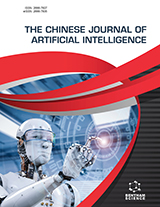The Chinese Journal of Artificial Intelligence - Current Issue
Volume 1, Issue 2, 2022
-
-
Potential Use of Artificial Intelligence in a Healthcare System
More LessAuthors: Janvi S. Madhavi and Ojaskumar D. AgrawalArtificial Intelligence (AI) is a swiftly evolving branch of technology that has been used to improve clinical practice, minimize errors, and boost safety and efficiency worldwide; in almost every field. AI is used for machine-learning algorithms and techniques to replicate human cognition in the assessment, display, and interpretation of complicated medical and healthcare data. AI is surfacing and producing a discernible shift in t Read More
-
-
-
Perspectives of Artificial Intelligence (AI) in Health Care Management: Prospect and Protest
More LessBackgroundArtificial intelligence postulates that computers will eventually supervise performing tasks through various pattern recognition with less or without human interventions and assistance. It appears to mimic human cognitive functions. Resembling the human brain, it receives various forms of raw data that are stored, aligned, surveyed, interpreted, analyzed, and converted to single processed data, making it easy to c Read More
-
-
-
Parameter Sensitivity Analysis of the Democratic Behavior of Swarm Robots
More LessAuthors: Andreas Hügli, Marco A. G. Pereira, Rolf Dornberger and Thomas HanneAimsThe purpose of this study is to determine under what conditions, such as noise and malfunction, successful consensus achievement in swarm robotics is possible.BackgroundSwarm robots can be used to solve exploration problems, such as the best-of-n problem. Consensus achievement plays a crucial role as the swarm must collectively agree on a solution. This task can be even more challenging considering noise and m Read More
-
-
-
A Variant Genetic Algorithm for a Specific Examination Timetabling Problem in a Japanese University
More LessAuthors: Jiawei Li and Tad GonsalvesBackgroundExamination Timetabling Problem that tries to find an optimal examination schedule for schools, colleges, and universities, is a well-known NP-hard problem. This paper presents a Genetic Algorithm variant approach to solve a specific examination timetabling problem common in Japanese colleges and universities.MethodsThe proposed algorithm uses a direct chromosome representation Genetic Algorithm and im Read More
-
-
-
Robust and Lightweight System for Gait-based Age Estimation towards Viewing Angle Variations
More LessAuthors: Jaychand Upadhyay, Tad Gonsalves and Vijay KatkarBackgroundIn computer vision applications, gait-based age estimation across several cameras is critical, especially when following the same person from various viewpoints.IntroductionGait-based age recognition is a very challenging task as it involves multiple hurdles, such as a change in the viewpoint of the person. The proposed system handles this problem by performing a sequence of tasks, such as GEI formation from silh Read More
-
Volumes & issues
Most Read This Month Most Read RSS feed
Article
content/journals/cjai
Journal
10
5
false
en


